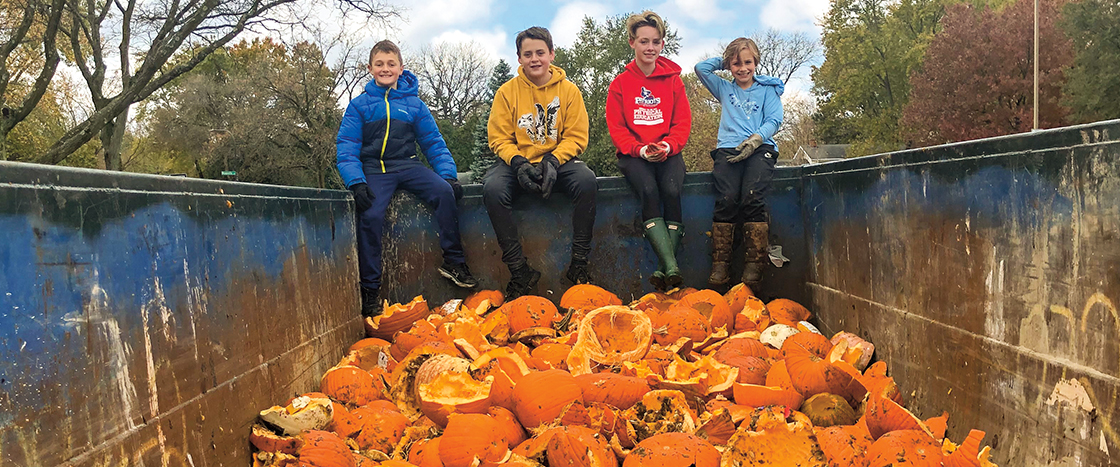Kellyjennings/Getty Images
Jack-o’-lanterns usually begin rotting within 10 days of carving.
On November 2, 2019, dozens of people hauled giant pumpkins and grimacing jack-o’-lanterns to Elmwood Elementary School in Naperville, Illinois.
Kids pitched the pumpkins into a trash bin and then jumped in themselves! They smashed the pumpkins with their feet. “It was so much fun!” says 11-year-old Jack Bell.
Events similar to this one, called Pumpkin Smash, are held after Halloween across the U.S. These smash fests aren’t just for fun. They help the environment by keeping thousands of pumpkins out of landfills. There, the fruits would decompose, or break down, releasing harmful gases.
Instead, pumpkins collected at the events are recycled into soil. “It’s about helping the planet,” says Kay McKeen. She’s the founder of SCARCE, a group that organizes Pumpkin Smash events in Illinois.
November 2, 2019 was a busy day at Elmwood Elementary Schoo in Naperville, Illinois. Dozens of people dropped off pumpkins and jack-o’-lanterns. Kids threw them into a trash bin. Then they jumped in themselves! They smashed the pumpkins with their feet. “It was so much fun!” says Jack Bell. He’s 11 years old.
This event was called Pumpkin Smash. Similar events are held after Halloween across the U.S. These smash fests aren’t just fun. They also help the environment. They keep thousands of pumpkins out of landfills. There, the fruits would decompose. They break down and give off harmful gases.
Instead, pumpkins collected at the events are recycled. “It’s about helping the planet,” says Kay McKeen. She’s the founder of SCARCE. The group organizes Pumpkin Smash events in Illinois.

